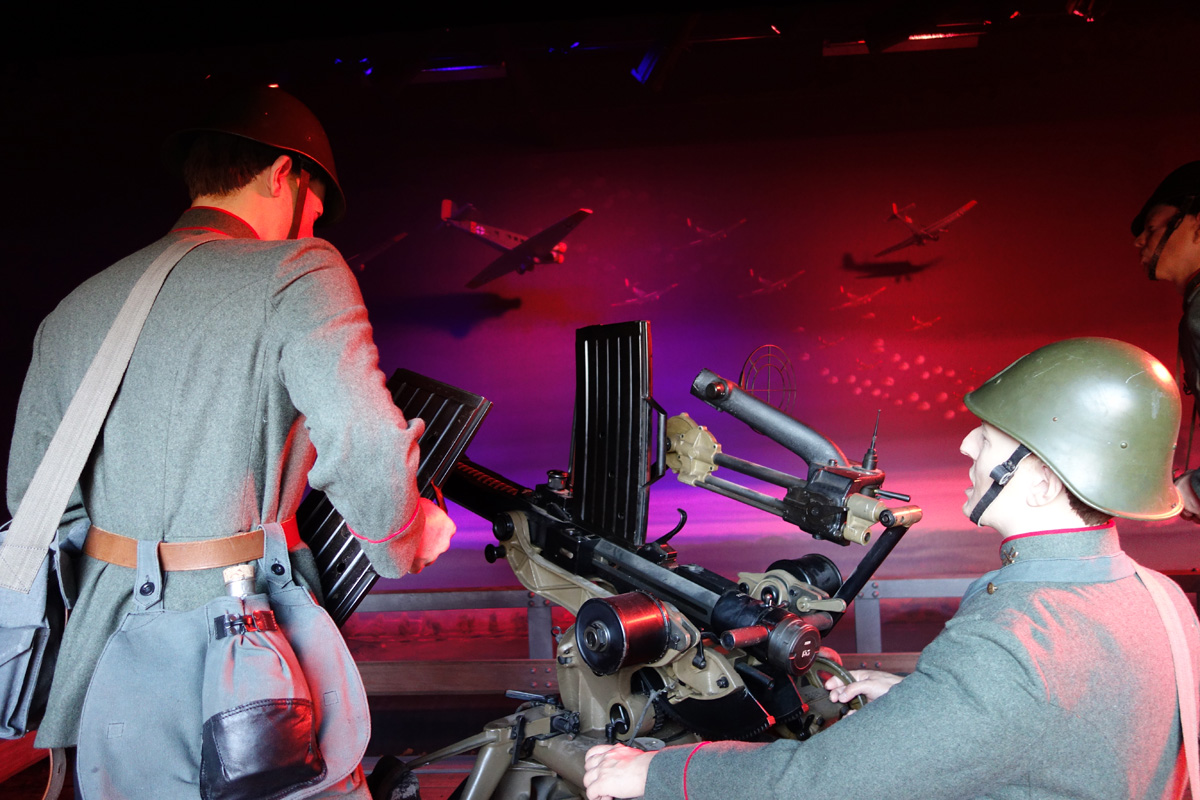|
| |
|
Dutch soldiers on roof Calvé
Factory, Delft |

|
Dutch soldiers on roof Calvé
Factory, Delft
On
10 May 1940, German troops started their surprise attack on the
Netherlands without a declaration of war. The day before, small groups
of German troops wearing Dutch uniforms had entered the country. Many of
them wore 'Dutch' helmets, some made of cardboard as there were not
enough originals. The Germans employed about 750,000 men, three times
the strength of the Dutch army; some 1,100 planes (Dutch army: 125) and
six armoured trains; they managed to destroy 80% of the Dutch military
aircraft on the ground in one morning, mostly by bombing. Although the
Dutch army was inferior in nearly every way, consisting mostly of
conscripts, poorly led, poorly outfitted and with poor communications,
the Germans lost over 500 planes in the three days of the attack, a loss
they would never replenish. Also the first large-scale paratroop attack
in history failed, the Dutch managing to recapture the three
German-occupied airfields near the Hague within the day. Remarkable was
the existence of privately owned anti-aircraft guns. No less surprising
may be the fact that the Dutch army owned only one tank.
The
Dutch air force, which was not an independent arm of the Dutch armed
forces, but part of the Army,
on 10 May operated a
fleet of 155 aircraft: 28 Fokker G.1 twin-engine destroyers; 31 Fokker D.XXI and
seven Fokker D.XVII fighters; ten twin-engined Fokker T.V, fifteen Fokker C.X
and 35 Fokker C.V light bombers, twelve Douglas DB-8 dive bombers (used as
fighters) and seventeen Koolhoven FK-51 reconnaissance aircraft — thus 74 of
the 155 aircraft were biplanes. Of these aircraft 125 were operational. Of the
remainder the air force school used three Fokker D.XXI, six Fokker D.XVII, a
single Fokker G.I, a single Fokker T.V and seven Fokker C.Vs, along with several
training airplanes. Another forty operational aircraft served with the marine
air service along with about an equal number of reserve and training craft.The
production potential of the Dutch military aircraft industry, consisting of
Fokker and Koolhoven, was not fully exploited due to budget limitations.
|
Back to Nationaal
Militair Museum or photo
gallery
Photo Rob Vogelaar
©
|